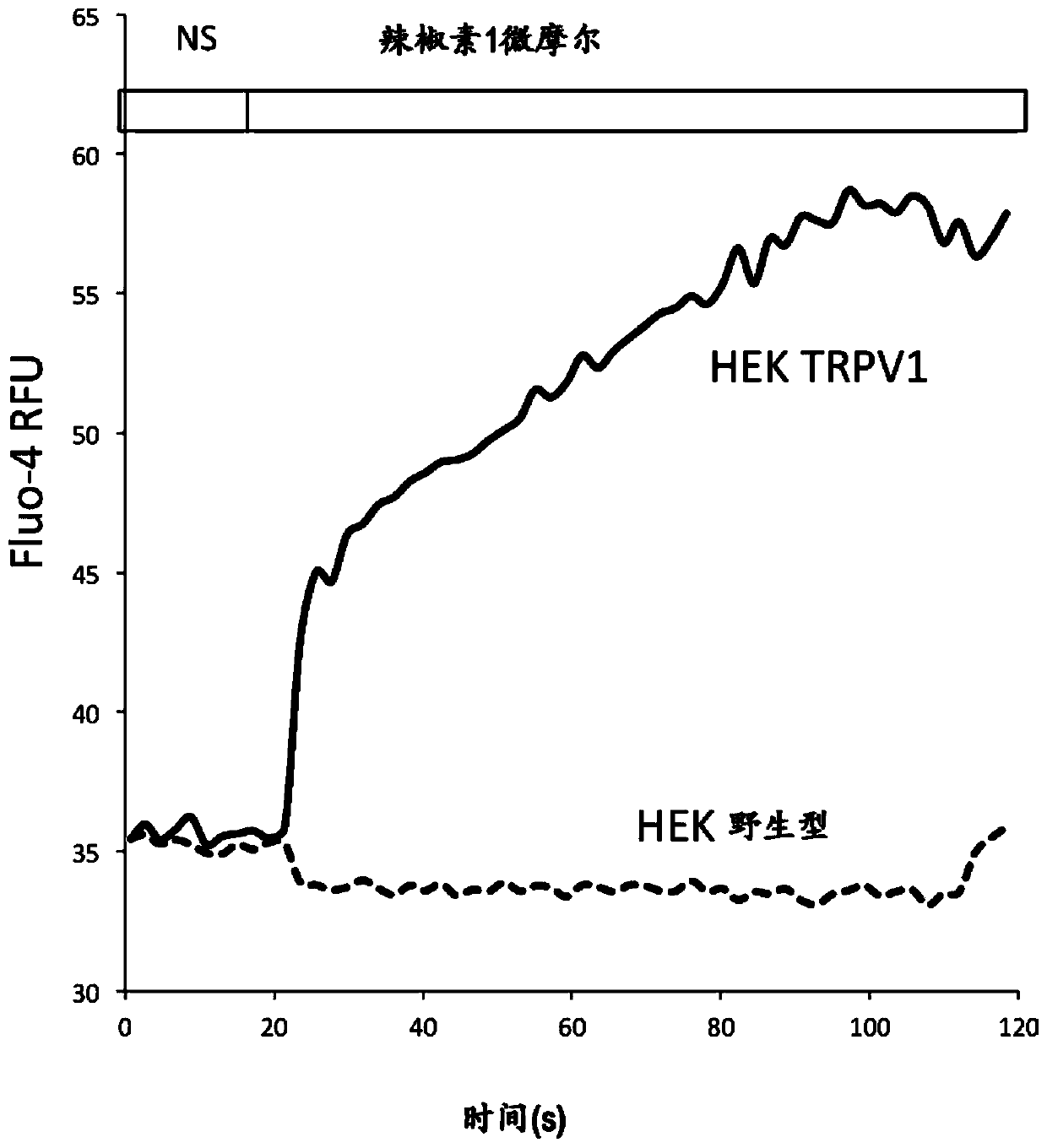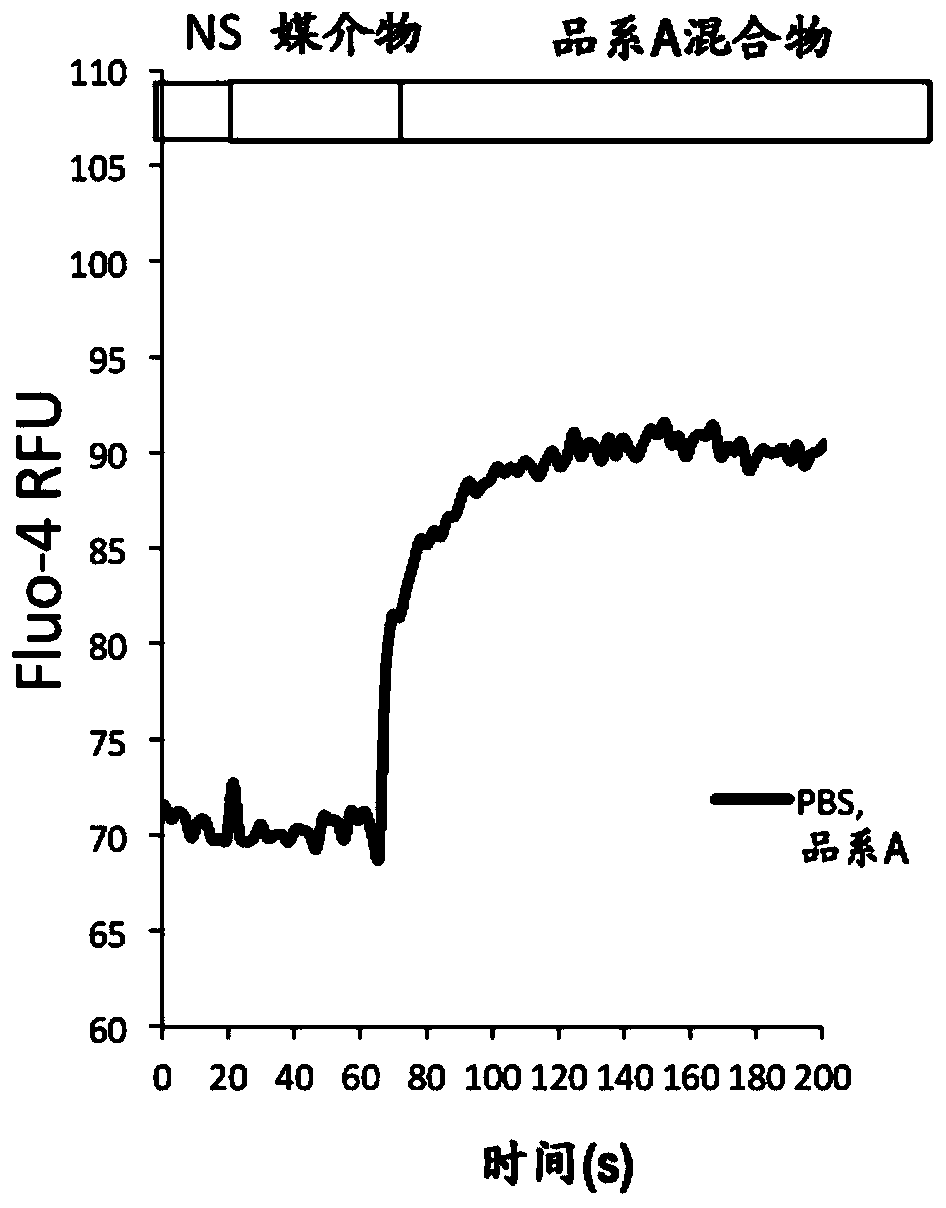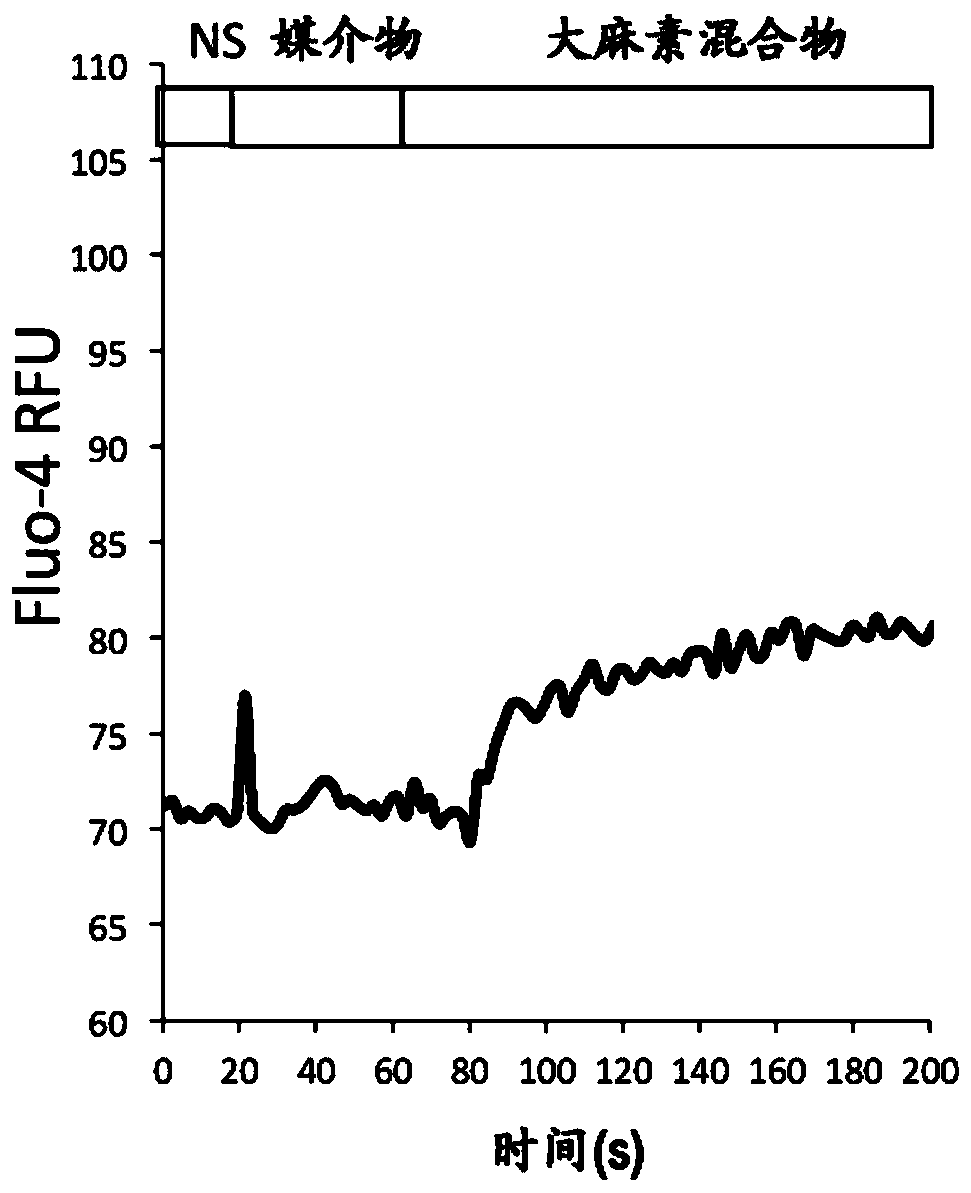Myrcene-containing complex mixtures targeting trpv1
A composition and technology of cannabinoids, applied in the direction of drug combination, active ingredients of hydrocarbon compounds, active ingredients of hydroxyl compounds, etc., can solve the problems of highly irritating sensitive areas, and cannot solve problems such as visceral pain, bone pain disorder, etc.
- Summary
- Abstract
- Description
- Claims
- Application Information
AI Technical Summary
Problems solved by technology
Method used
Image
Examples
Embodiment 2
[0227] 4.10.2. Example 2: Cell culture system for testing TRPV1-mediated calcium response
[0228] HEK293 cell line was stably transfected with pcDNA6TR (Invitrogen, CA) plasmid (encoding tetracycline-sensitive TREx repressor protein) and kept at 37°C in 5% humidified CO 2 In DMEM+10% fetal bovine serum (inactivated at 55°C for 1 hour)+2mM glutamine in atmosphere. Selective pressure on TRex 293 cells was maintained by continuous culture in 10 μg / ml elastin (Sigma, St Louis, MO).
[0229] To generate TRex HEK293 cells with inducible expression of TRPV1, parental cells were electroporated with rat TRPV1 cDNA in pcDNA4TO vector and clones were selected by limiting dilution in the presence of 400 μg / ml zeocin (Invitrogen, CA) cell line. TRPV1 expression was induced with 1 μg / ml tetracycline for 16 hours at 37°C. Stable lines were screened for inducible protein expression using anti-FLAG western blot and inducible expression was confirmed. Electrophysiological measurements furt...
Embodiment 3
[0231] 4.10.3. Example 3: TRPV1-Mediated Calcium Influx in Response to Strain A Mixture, Cannabinoid Mixture or Terpene Mixture
[0232] TRPV1 -mediated calcium influx was tested in response to the strain A mixture, the cannabinoid mixture and the terpene mixture as described above. Each mixture was applied to cell culture medium to expose the cells to the final concentrations of the various components provided in Table 1 ("concentration μg / ml"). For example, cells were exposed to 5.6 μg / ml cannabidiol (CBDV), 8.75 μg / ml myrcene, etc. using the strain A mixture.
[0233] Figure 2A to Figure 2C Calcium flux data measured as Fluo-4 relative fluorescence units (Fluo-4 RFU) as a function of time (seconds) are presented. like Figure 2A to Figure 2C As shown, it was observed that in response to the application of the strain A mixture ( Figure 2A ) and terpene mixtures ( Figure 2C ) significant calcium flux, but in response to the application of cannabinoid mixture ( Figur...
Embodiment 7
[0254] 4.10.7. Example 7: Desensitization of myrcene to TRPV1
[0255] The TRPV1 agonistic effects of various concentrations of myrcene and capsaicin were compared. Specifically, the areas under the curve (AUC) of the calcium response curves of myrcene and capsaicin were calculated respectively and plotted in Figure 14Aat the corresponding concentration in . Higher concentrations of myrcene were required to induce the same calcium influx as capsaicin. For example, myrcene at about 200 nM and capsaicin at about 30 nM induce calcium influx to a similar extent when the extent of calcium influx is determined from the AUC of the calcium response curve between 20 nM and 300 nM.
[0256] The long-term effects of myrcene and capsaicin on TRPV1 were also compared. like Figure 14B As shown, both myrcene and capsaicin caused desensitization of TRPV1 after 24 hours of exposure to each compound. For example, when myrcene was first introduced into cells expressing TRPV1, myrcene indu...
PUM
 Login to View More
Login to View More Abstract
Description
Claims
Application Information
 Login to View More
Login to View More - R&D
- Intellectual Property
- Life Sciences
- Materials
- Tech Scout
- Unparalleled Data Quality
- Higher Quality Content
- 60% Fewer Hallucinations
Browse by: Latest US Patents, China's latest patents, Technical Efficacy Thesaurus, Application Domain, Technology Topic, Popular Technical Reports.
© 2025 PatSnap. All rights reserved.Legal|Privacy policy|Modern Slavery Act Transparency Statement|Sitemap|About US| Contact US: help@patsnap.com



